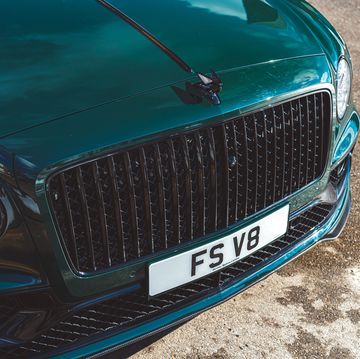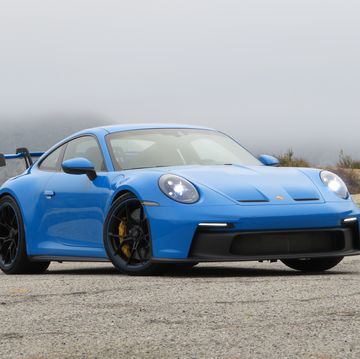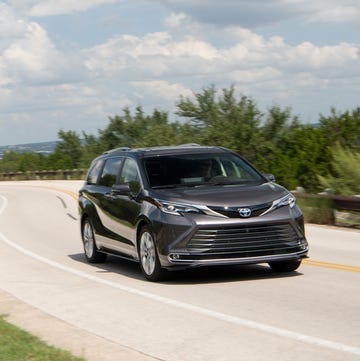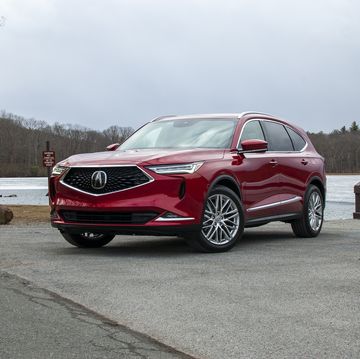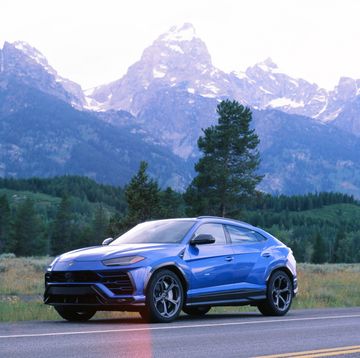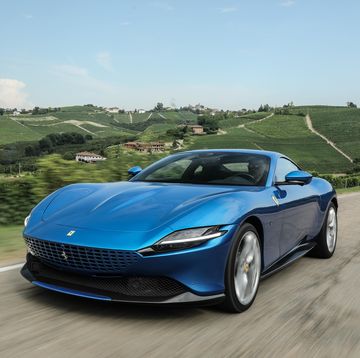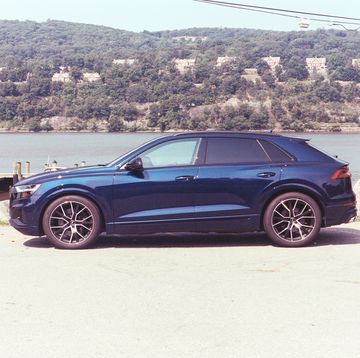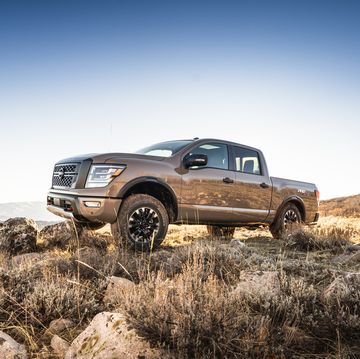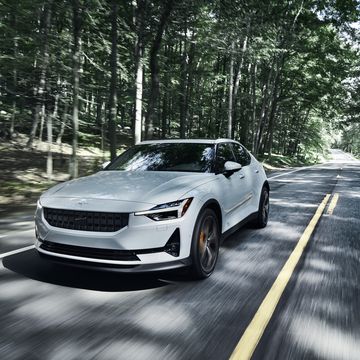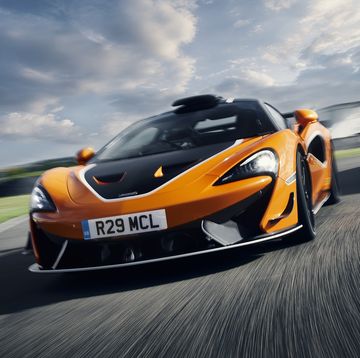The new Toyota Supra always left me feeling a little flat. It’s quick, powerful, and nimble, of course. In a world full of performance SUVs and crossover coupes, I’m thrilled that Toyota stayed true to tradition, maintaining the Supra as a two-seat, two-door sports coupe. But the car never truly grabbed me.
The car has gotten better for 2021. Just one year into the Supra’s tenure, Toyota gave it a significant power boost. The twin-turbo 3.0-liter straight-six engine now makes 382 horsepower for 2021, up from last year’s 335 (torque rises by a mere 3 lb-ft, to 368). The active rear differential and electronic stability systems have been adjusted to accommodate the extra power, and additional bracing ties the strut towers to the radiator mount, stiffening the front-end feel.
But that’s not the one I like best.
This year, for the first time, American customers will be able to purchase a four-cylinder Supra. The 2.0-liter variant has been available in Europe and Japan since the debut of the A90-generation car; Toyota decided that, with the increase in horsepower for the top-spec Supra, the addition of a more affordable variant made sense for U.S. buyers.
The GR Supra 2.0 offers 255 horsepower and 295 lb-ft of torque, identical to the BMW Z4 sDrive 30i that it shares nearly everything with. Compared to the six-cylinder Supra, the four has different spring and damper tuning, a mechanical (rather than electronic) limited-slip differential, smaller brakes, and downsized 18-inch wheels. The base-model Supra also forgoes the adaptive suspension that’s standard on the 3.0. Toyota claims the two-liter Supra weighs in at 3181 lbs, a weight savings of roughly 220 lbs. The loss of the eLSD shaved some weight off the rear, allowing the four-cylinder Supra to match the six-cylinder’s near-50-50 front-rear weight distribution. Both four- and six-cylinder Supras get an eight-speed automatic as their only gearbox choice.
And if you’re asking me which one I’d choose out of the two, I’d go for the four-cylinder.
On a bright, sunny late-spring day, I sampled both 2021 Supras at Bear Mountain State Park, just north of R&T’s New York City offices that stand empty for the moment. When the six-cylinder Supra first came out, its super-quick steering felt too frenetic to me. The car changes directions before inertia has a chance to push you into the seat bolsters. It’s great fun on a racetrack, and coupled with the Supra’s devilishly short wheelbase, it lets you snap the car into a drift with ease. But it feels out of place, artificial. The Supra’s drivetrain and chassis tuning is serious and refined. The overclocked steering feels mismatched.
The four-cylinder rectifies that. Taller sidewalls sponge up a little bit of that snappish steering character, making the car feel more cohesive—just don’t expect to feel any steering feedback. Smaller, lighter wheels and tires make the four-pot Supra feel more nimble than its six-cylinder sibling, and over rough Northeast roads, the 2.0 doesn’t get nearly as unsettled as the big-bore model. It’s not as fast, of course, but on the pockmarked roads of New York State, it’s not as pummeling to drive at pace.
Acceleration from the 2.0-liter engine is brisk but not what you’d call jaw-dropping. We didn’t get the chance to perform instrumented testing on our four-cylinder Supra, but its BMW twin notched a 5.1-second 0-60 sprint when tested by our sister publication Car and Driver—quick, but in a different league from the six-cylinder’s 3.9-second blast. One demerit for the four: There’s a pretty big RPM drop going from second to third gear, allowing the tiny turbocharged engine to lose its head of steam if you misjudge an upshift on a mountain road (the gearing is identical on the 3.0, but the six can grunt through that upshift). The engine sound is unobtrusive, barely noticeable at times, with an inoffensive but certainly not inspiring exhaust note. As with the BMW, the four-cylinder Toyota augments its engine noise through the stereo and adds unconvincing lift-throttle pops to the exhaust in Sport mode, two contrivances that take away from the genuine sports car delight of this machine.
As for the 2021 version of the six-cylinder car, it doesn’t feel that much different from last year’s model. The addition of 47 horsepower may have made the car a little quicker in 0-60, but we didn’t perform instrumented testing during our time with the car, and my seat of the pants didn’t register a notable change to the already-impressive acceleration. The 3.0-liter, with its shorter sidewalls and stiffer suspension, felt flummoxed over really rough pavement. There are unsettling moments where the rear suspension wants to do something completely different from the front. But absent those minor quibbles, the ’21 Supra 3.0 is as fast and numerically impressive as ever.
The straight-six Supra does all the stuff a Supra had to do to enter the 21st century: It’s fast, grippy, technologically advanced, and capable of laying down serious lap times. But it never comes alive. It neither feels nor inspires joy while trouncing apexes or attacking backroads. It’s businesslike in its approach to speed. The slower, softer, lighter Supra 2.0 doesn’t fix all those problems, but it’s a small step in the right direction. And we assume it will be a good bit cheaper too—Toyota hasn’t released pricing information yet, but we expect the four-cylinder Supra to come in several thousand dollars below the 3.0’s $50,000 base price.







